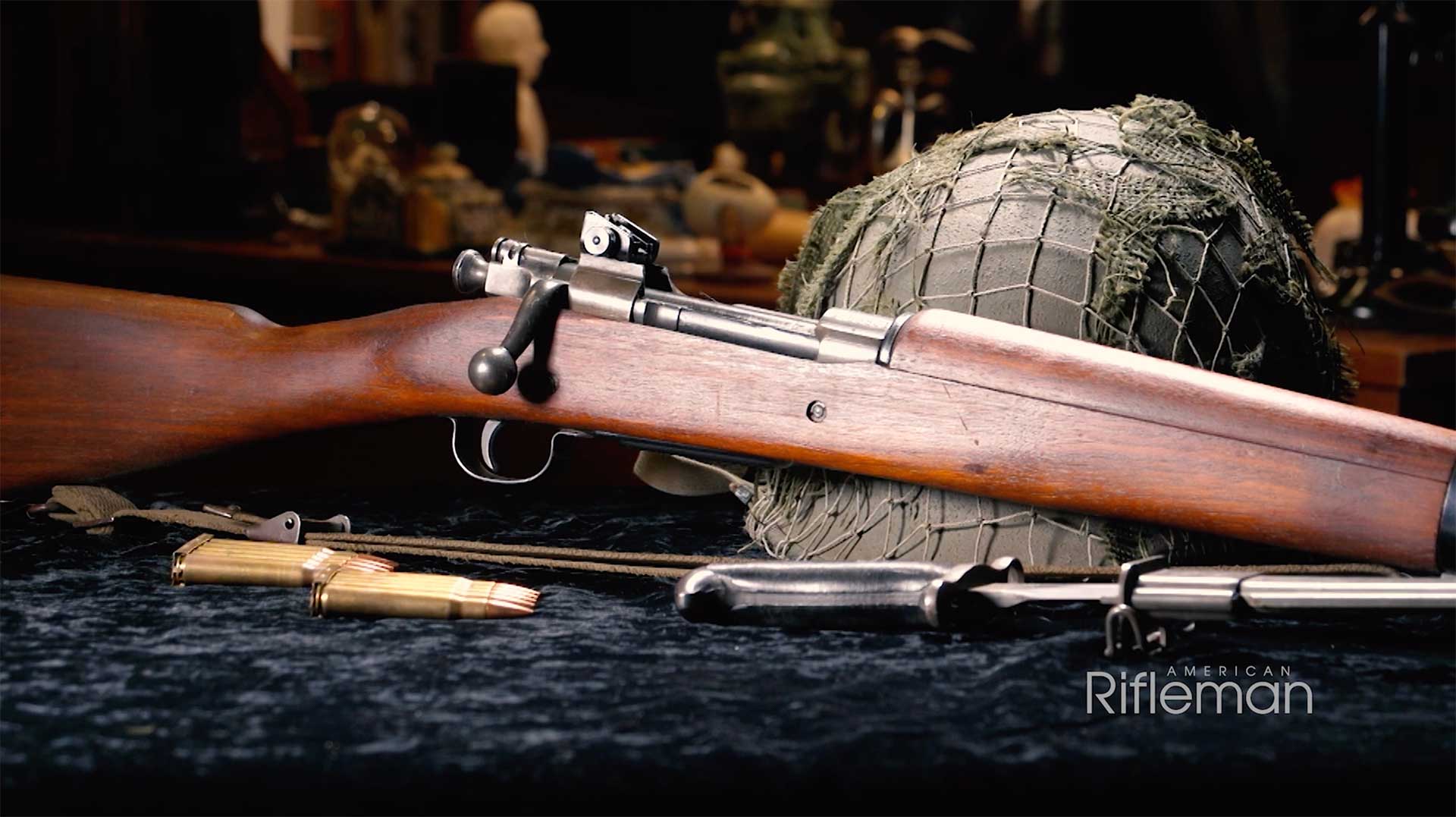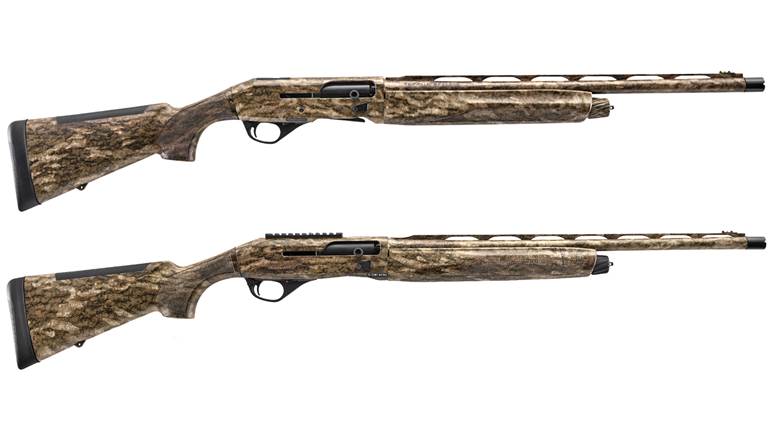
In addition to using the finest materials, Kimber M1911 pistols are built using advanced CNC production methods. This precision technology allows Kimber to maintain tolerances that were out of the question just a few decades ago. The result is out-of-the-box reliability and accuracy never before possible from the factory M1911 pistols many of us grew up with. Even entry-level Kimber M1911s commonly produce accuracy far better than most of yesteryear’s factory match-grade pistols, not to mention Kimber Match M1911-style pistols, which actually produce close-range accuracy that is superior to many rifles. One such M1911 was the .45 ACP Kimber Target Match, released in a limited-editions of 1,000 guns beginning in 2006. Not to be confused with the Kimber Match Target, this Kimber M1911 shares many features, but is definitely a separate model with a number of unique features.
Mated to the Match Target’s stainless steel Match Grade 5-inch barrel is a blue steel solid Match bushing, which is also fitted to the slide. Being larger at the muzzle, the barrel locks up inside the bushing with no play. Below the barrel is a solid, stainless-steel, full-length recoil spring guide rod that enhances smooth operation.
Machined from a single, solid piece of stainless steel, Kimber’s Match barrel is air-gauged to verify end-to-end consistency within 0.001 inch. The barrel is final fit by hand in Kimber’s Custom Shop. Atop the front of the slide is a dovetailed front sight, the rear of which is serrated to eliminate glare, and on either side of the slide are three forward slide-cocking grooves.
Measuring ¼-inch wide, these matte blue angled grooves contrast to the polished sides of the slide. The total length of the forward section of slide-cocking grooves is 7/8 inches. The tiny “window” cut in the barrel hood at the rear of the chamber serves as a loaded chamber indicator.
Along the matte blued top of the Target Match’s slide is a 3/8-inch wide flat running from the front sight to the Kimber fully adjustable target rear sight. Along this flat are eight 20-line-per-inch grooves that further reduce light reflection. Using steel-on-steel click adjustments, the Kimber adjustable rear sight is mounted low in the slide, so the line of sight is as close to the barrel as possible. The sight’s notch is also at the rear of the slide for a maximum sight radius of 6.8 inches. On the right side of the slide under the lowered and flared ejection port are the words, “TARGET MATCH.” In the middle of the left side of the slide is the Kimber logo preceded by the word “LIMITED,” and followed by “EDITION.” Yes, the Target Match pistol was limited to a total production of 1,000.
On either side of the rear of the slide are four cocking grooves matching the three on each side at the front. The total length of the rear grooves is 1 ¼ inches, and on the flat portion at the rear of the right side or the slide is the likeness of a target with a tight, five-shot group.
The lines of the slide Target Match are not to be outdone by those of the frame. With the same smooth blue finish on the flat sides of the frame, the bottom, front and rear portions are fine bead blasted to render the same matte blue finish found on the top of the slide and in the cocking grooves. Contrasting this is the matte finished solid lightweight aluminum match trigger. A mid-length trigger, this one is grooved and is adjustable for over-travel. The trigger is factory set to break between 3.5 and 4 pounds.
With the trigger guard meeting the frame with only a tiny radius, the front strap has a full 2 ½ inches of perfect 30-l.p.i.-machine checkering ending at an equally finely beveled magazine well, which houses an eight-round-capacity magazine.
Examining the Target Match’s back strap, one finds a steel flat mainspring-housing machine checkered to 20 lines-per-inch. Above this is a Kimber “humped” grip safety with two wavy grooves on the raised portion like those found on the Kimber Raptor M1911. The pistol’s rounded spur speed hammer is flanked by Kimber ambidextrous thumb safeties and in front of the left safety is a lightened slide stop. On the opposite side on the frame is the serial number, which is prefixed with the letters KTM. A final note on the mechanics of the Target Match is that, being a Series I Kimber, it also has no firing pin safety.
The walnut grips are checkered in the traditional large, diamond pattern with the Kimber logo in the center. The checkering and logo are laser cut. The large diamonds are inlaid with bird’s eye maple, which contrast beautifully against the walnut. Then the edges of the grips are nicely streamlined, or “melted” to eliminate all sharp edges.
Although I suspect that many of the 1,000 Kimber Target Match pistols will be treated as fine investments rather than shooters, I fired No. KTM0315 extensively. All mechanical functions including disassembly were as smooth and crisp as the finest custom M1911, and the gun’s trigger broke crisp at a hair over 3.5 pounds.
In addition to being pleasing to look at, the slide cocking grooves proved very easy to grasp. The magazines were inserted quickly and easily and were ejected from the pistol when the release was depressed. Three magazines come with the gun in addition to a polymer bushing wrench and a gunlock, all in a Kimber lockable hard case.
In testing the Target Match with several types of .45 ACP ammunition, the pistol functioned flawlessly and smoothly, feeding, firing and ejecting the empty brass without incident. In the accuracy department, the pistol produced hand-held groups under 2 inches from the bench at 25 yards. Firing the pistol off-hand at 25 yards, I was able to achieve five-shot groups hovering about 3.5 inches.
For those in the market for as fine a target M1911 style pistol as those costing twice the price, the Kimber Target Match is hard to beat. However, the growing number of Kimber collectors consumed most of these limited-edition pistols not long after their release in 2006. But they are out there, and if you can find one, it will be well worth money. If you can’t the are plenty of other models to choose from in the firm’s current catalog.
Kimber Target Match Specs
Caliber: .45 ACP
Muzzle Velocity: 850 f.p.s.
Barrel Length: 5" stainless Match Grade
Overall Length: 8.7"
Weight: 38 ozs.
Accessories: eight-round magazine
Safety: ambidextrous thumb safety and grip safety device
Sights: (front) fixed serrated blade. (rear) Kimber Adjustable
Grips: fancy checkered walnut.
Finish: high polished and matte blue
Price: $1,427 (last suggested retail)





































